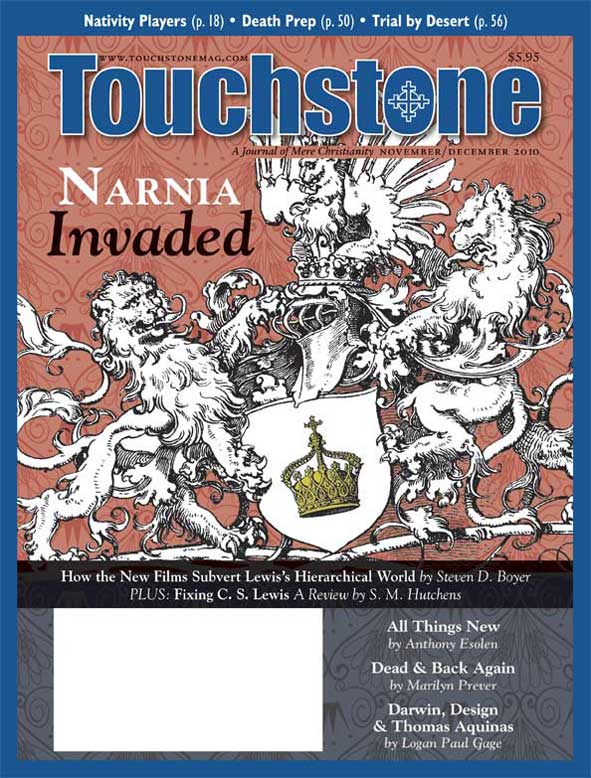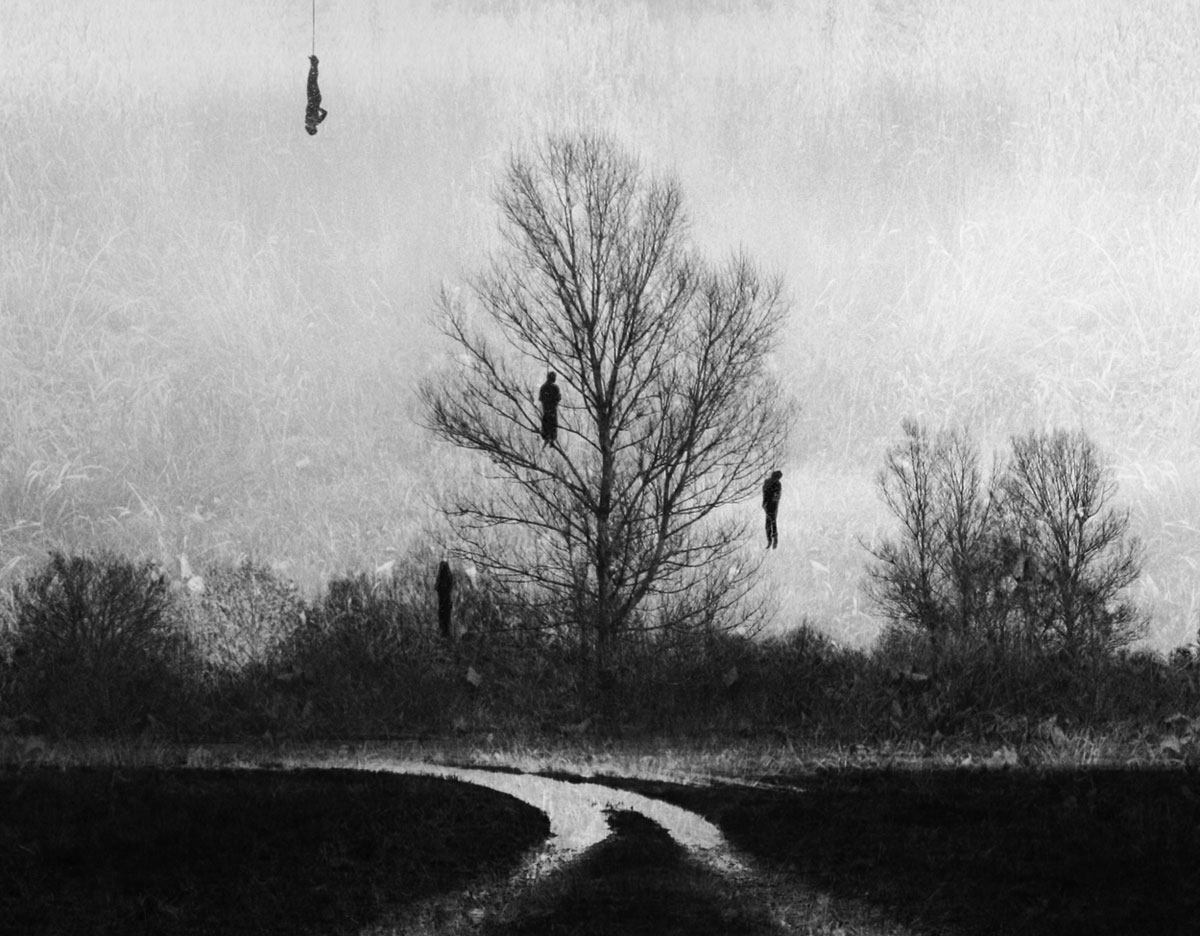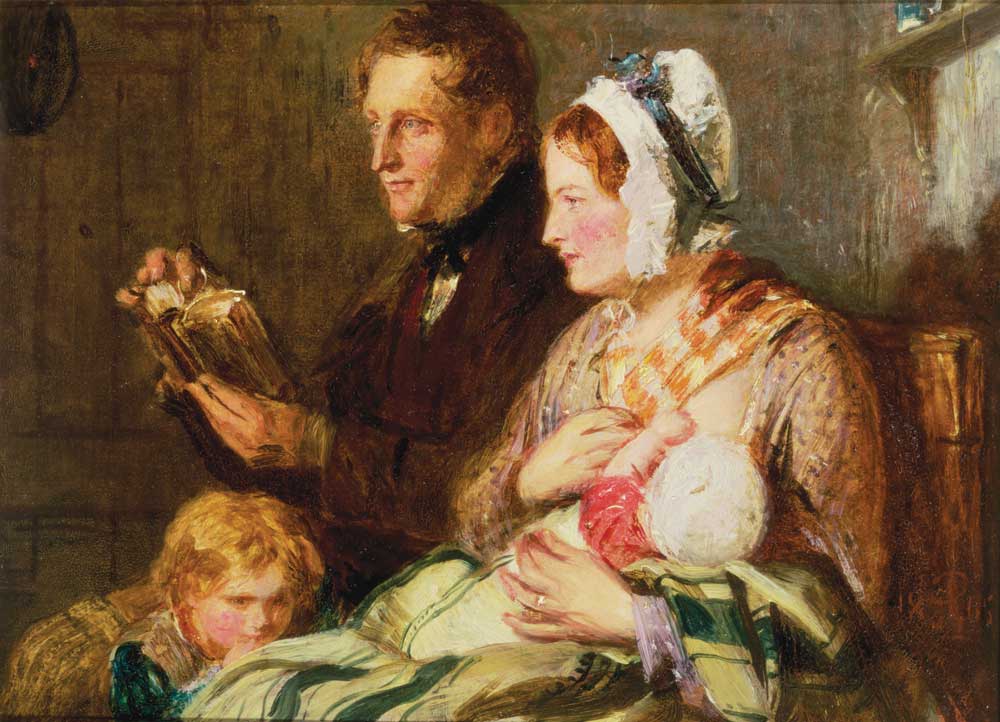Feature
Dead & Back Again
How Accounts of “Near-Death Experiences” Have Challenged
My Faith
I might as well confess right now that I personally never had a “Near-Death Experience” (NDE), unless you count the time in the hospital when I kept passing out and thought the nurses and doctors around my bed had turned into demons. No floating up to the ceiling and looking down at my poor dead body; no trip through a dark tunnel; no angels or deceased relatives coming to greet me. I was not even clinically dead at the time. Some people have all the luck.
It sometimes seems as though almost everyone has had an NDE or at least knows someone who did. I myself know one woman whose heart stopped beating during surgery, and she told me she found herself at “the Gate.” (“What gate?” “ You know, the Gate.”) She met Jesus there, she said, and he told her she could stay with him or go back. She wanted to stay, but decided to go back because her husband needed her—an act of heroic virtue if I ever saw one. But she didn’t tell me any more details.
A classic Near-Death Experience (NDE) includes at least a few of the following: Your soul seems to be released from your critically injured or clinically dead body and finds itself going through a dark tunnel or some other transitional place between this world and the next. You may meet a “Being of Light” and experience deep feelings of peace, joy, and love. There may be a “life review,” where your whole life (or much of it) is recalled and its meanings revealed. You may meet other beings, perhaps angels or the souls of people you knew who have died. There may be some kind of message given or questions asked and answered. The Being of Light (sometimes identified as God or Jesus) may send you back to this world, or give you a choice about going or staying.
Details vary, but the main outlines are often surprisingly similar, and so is the typical outcome: The subject is grateful for what he has received and resolves to be a better person because of it. Even when the experience is not heavenly but hellish—and that does happen—the fear and guilt usually end in the person’s desire to amend his life.
There are many records all through history of things like this happening. They seem to be more common now, but that’s probably because medical advances have made it possible for people to be revived after clinical death has occurred. Also, there have been cultural changes that make these stories safe to tell; people can reveal them without having to fear being called crazy or possessed.
Two Kinds of Worry
I’m fascinated by accounts of NDEs, and reading about them has, in general, strengthened my faith. But a few of them raise questions that have challenged my faith, and I wonder if other Christians have had the same trouble. I hope the story of how I’ve begun meeting these challenges might help others who are also fascinated but sometimes disturbed by these stories.
NDE stories have challenged me in two different ways: On the one hand, I worry that they might be true, and on the other, I worry that they might not be.
The first worry has to do with the content of a few of them: No censor librorum would give them a nihil obstat (“nothing stands in the way”) because plenty stands in the way—in fact, if certain of these accounts are altogether accurate, something is wrong with my religion.
The second worry has to do with researchers who claim that all the elements of NDEs can be attributed to purely natural causes—electro-chemical changes in the brain, drugs, lack of oxygen, psychological needs, or even extreme stress. (Stress is a handy explanation for practically anything, life being made up mostly of stress alternating with boredom). Some researchers have even claimed that they can induce an NDE, or at least an apparent OBE (“Out-of-Body Experience”) by sending an electric current into a particular area of the brain.
You don’t have to be a twenty-first-century neurologist to doubt the supernatural origin of these experiences. When Marley’s ghost asks Scrooge, “Why do you doubt your senses?” Scrooge sensibly replies,
Because . . . a little thing affects them. A slight disorder of the stomach makes them cheats. You may be an undigested bit of beef, a blot of mustard, a crumb of cheese, a fragment of an underdone potato. There’s more of gravy than of grave about you, whatever you are!
Not Easily Dismissed
If these researchers are right, that would dispose of my first problem, the apparent evidence against Christianity in some of the accounts. Heaven knows there is plenty of hokum in the world, and it would be convenient to just shovel this batch in with the rest and get on with life. After all, my Christian faith does not stand or fall on the veracity of anyone’s private experience.
And yet . . . these stories, taken as a whole, are an impressive witness to the supernatural, to life after death, and to the transcendent importance of our moral choices. Some of the more excitable secularists are very nervous about the frequent appearance of this Being of Light, who knows all our secrets but loves us anyway. There have been conversions among unbelievers. Many of the accounts are too beautiful to dismiss outright (even physicists will tell you that beauty can be a signpost to truth). “The heart has its reasons. . . .”
Besides, there is a body of scientific evidence in favor of NDEs that can’t easily be dismissed—for example, the accounts of people seeing and hearing things while they were clinically dead, things they could not have seen or heard from the place where their body was.
And if so many moving and life-changing experiences turn out to be nothing but the effect of electro-chemical events in the brain, how many more “spiritual” experiences will have to be thrown into the reductionist garbage bin? What if St. Teresa’s “interior castle” is nothing but a sandcastle built on misfired neurons? What if St. Paul was knocked over on the road to Damascus by nothing more powerful than a disturbance of the ocular nerve? What if Pascal’s “God of Abraham, God of Isaac, God of Jacob, not the philosophers and scholars” is, in the end, an illusion from regions well below the philosophers and scholars and nearer to the great apes?
Just Neuropathology?
Let’s take the easiest challenge first—the claim that researchers have explained away the seemingly supernatural origin of NDEs, or soon will if we give them enough time.
The publicizing of NDEs and the discovery of how common they are have caused some distress among dogmatic materialists, similar to that experienced by many astronomers when evidence for the “Big Bang” first came out, suggesting that the universe had a beginning. Just so, a certain number of “true-believer” atheists in the scientific community have begun scurrying around for evidence that will place NDEs safely in the category of neuropathology. Judging by their results so far, however, they’re going to have to keep scurrying for a long time.
For example, the debunkers are troubled by the fact that many NDEs take place while the patient has a flat EEG (electro-encephalogram)—in other words, when there are no detectable brain waves at all. Though it is difficult to see how a brain-dead patient can experience hallucinations, the debunkers have countered this argument with evidence that there can be activity deep inside the brain that is not registered by an EEG.
University of Toledo neuroscience researcher and EEG expert Dr. John Greenfield explains why this claim doesn’t hold up:
It’s very unlikely that a hypoperfused brain [no blood flow to the brain], with no evidence of electrical activity could generate NDEs. Human studies as well as animal studies have typically shown very little brain perfusion [blood flow] or glucose utilization when the EEG is flat. There are deep brain areas involved in generating memories that might still operate at some very reduced level during cardiac arrest, but of course any subcortically generated activity can’t be brought to consciousness without at least one functioning cerebral hemisphere. So even if there were some way that NDEs were generated during the hypoxic state [while the brain is shut off from oxygen], you would not experience them until reperfusion allowed you to dream them or wake up and talk about them.
The will to believe is powerful on both sides. I expect most doctors and researchers are honest enough, but once the media get hold of a hot story, well, as Winston Churchill reportedly said, “A lie gets halfway around the world before the truth gets a chance to put its pants on.” Since most people who hear accounts of these debunkings are not interested enough to look past the soundbite or headline, they’re left with a sort of vague idea that “science has disproved all that.”
Bogus Debunkings
Some of the “evidence” against NDEs is just plain silly. I thought there was a serious challenge afoot when I saw a headline announcing that researchers had succeeded in “Simulating Near-Death Experiences.” This one turned out to be a complete red herring. It was a “virtual reality” device that was programmed to simulate the visual effects that people with NDEs had described—just a fancy arcade game with lots of special effects. The inventors didn’t seem to realize, or didn’t care, that visual effects alone don’t make an NDE; it’s the interior experience that counts—not only the feelings of heavenly peace and joy (which can be dismissed as pathological euphoria) but the gain in knowledge and understanding of life and of oneself.
The latest serious challenge I’ve heard of came from a Dr. Olaf Blanke, a neurologist at the Geneva University Hospital in Switzerland. While performing surgery, he stimulated the patient’s right angular gyrus (a small region in the brain’s right hemisphere) with a mild electric current. This caused the patient to have what was later described in various reports as either an OBE or an NDE. Dr. Blanke, or rather the reporters, didn’t seem to distinguish one from the other—which is like not distinguishing between taking off your clothes on the beach and going swimming in the ocean.
Some of the headlines were so enthusiastic that I almost got the impression that this patient had been “caught up into the Third Heaven” like St. Paul, and seen things it was “not lawful to describe”—and all because her doctor had zapped her with a bit of electricity. It sounded like the debunkers had won a gold medal in the Materialist Olympics.
But as it turned out, all she had experienced was a sort of bargain-basement OBE, wherein her soul was apparently stuck halfway out of her body—or at least she could only see part of her body lying on the operating table—and hovered somewhere above, watching to see what would happen next. When nothing in particular did, her soul or whatever it was zipped back into its normal place and that was that. Hardly a life-changing experience.
The woman was an epileptic, and epileptics do have strange experiences during seizures. Moreover, this OBE was not a planned experiment; it only happened once; there was no videotaped record of the event; and (last I heard) the surgeon didn’t follow it up. So this one also was a dud. If this is what passes for scientific disproof of life after death, a new Dark Ages is upon us.
Helpful Debunkers
The whole controversy set me thinking about the role of healthy skepticism in the development of our faith. We know the call to believe is an essential part of Christianity. How often, and how sadly, Jesus accused his friends of being “slow to believe”! But if we are to be “wise as serpents,” there is also a need to avoid credulousness. We live in a credulous age; there are people in your own neighborhood who believe things because they saw them on the Internet.
I was brought up an agnostic, and skepticism is still my default mode when I hear reports of the supernatural (outside of what is guaranteed by my Church). I had, and still have, a delight in books debunking seemingly preternatural phenomena by finding their natural causes. Philip J. Klass’s UFO’s Explained is one of my favorites, and I recommend it highly. By means of careful and often brilliant detective work, he shows how even the most dramatically “unexplainable” events can be explained when subjected to persistent investigation. His book is full of gems, such as his discovery that even trained observers, like scientists and airline pilots, will report seeing “rows of lighted windows” on a UFO that turns out to have been a meteor trail.
I also enjoy the books of “The Amazing Randi,” a stage magician who has devoted a good part of his life to unmasking pretenders to supernatural powers, especially quack doctors who prey on the poor and desperate. He is especially good at answering gullible scientists who set up experiments to test for alleged ESP and similar psychic powers. His contention is that they are usually taken in because they are simply the wrong sort of expert. What is needed for these sorts of tests is stage magicians; scientists are too easy to trick because they are not used to their subjects trying to fool them.
Randi tells a revealing story about Uri Geller, who has convinced many people that he can bend spoons with pure mind-power. One day Geller was scheduled to perform before a large audience, and somebody warned him that the whole first row was occupied by stage magicians. He absolutely refused to go onstage; they had to make an excuse and cancel the performance.
Most of these debunkers are personally agnostic; some are anti-religious while others have respect for sincere religion and distinguish it from superstition. I don’t consider people like that to be enemies of my faith, but rather friends who help me sort out the truly supernatural from illusion, self-deceit, and fakery, so that when we Christians speak of a true miracle, unbelievers won’t be able to say, “Oh, those religious people will believe anything.”
There’s a lovely, idealized portrait of such a man in C. S. Lewis’s novel, That Hideous Strength. The character of McFee is based on a teacher of his who taught him how to think rigorously, and so eventually helped Lewis become a Christian, though the teacher himself remained an atheist. In this gullible and sentimental age, when “signs and portents” are as common as junk mail, and grown-up human beings go to sleep with stuffed angels under their pillows for luck, we need a good dose of McFee’s bracing, virile skepticism.
A Deeper Challenge
The second challenge to my faith goes deeper. It concerns those accounts of NDEs that sound authentic and yet seem to give evidence for doctrines that are contrary to Christianity, most commonly reincarnation, pantheism, universalism, and religious indifferentism. Reincarnation is a very popular idea these days, when so many people have, as they say, “issues with commitment” (what Jesus called “hardness of heart”) and don’t want to be rushed into anything irrevocable in the way of renouncing their favorite sins. (“Sure, I’m piling up bad karma, but I can always work it out in the next life.”)
My breakthrough in answering this challenge was a very simple realization: Any kind of private revelation is subject to error. According to Catholic teaching, a private revelation includes anything beyond the Deposit of Faith once given to the apostles, and its interpretation under the authority of the Catholic magisterium. Even if a private revelation comes from God, it comes to and through a fallible human mind, and there will always be distortions. Even saints have made serious mistakes about private revelations, and some very holy mystics have contradicted each other.
As a Catholic, I enjoy the liberty of knowing that nobody is obliged to believe any private revelation at all, not even a Church-approved one such as Our Lady of Fatima. Even if the Church certifies that there is nothing in the revelation against the Faith, and allows churches to be named after it or a feast day to be set aside for it, we are still perfectly free to accept or reject it, in whole or in part. Many Catholics who are ignorant of this teaching make themselves unnecessarily confused.
More Possibilities
But of course, in the case of NDEs, it may not come to that. The receiver of the apparent revelation may simply be lying: Lots of people enjoy being the center of attention, and many of them are talented actors.
Or the materialists may be right about any particular claim to an NDE—it could have been a hallucination, or the effect of disease or drugs. Or it could have been a real experience that was later distorted or exaggerated, or just remembered wrong (many NDEs are not written down till a long while after the event). It might be a deception of the devil. Or it might be a money-making scheme. (I know of at least one man who claimed to have had an NDE and set himself up as a New Age spiritual guide, which brought him a comfortable income.)
Or (and I think this happens often) the experience might be from God, but the interpretation of it might not be, as, for instance, when someone feels deeply united with many different people and interprets the experience as “remembering” his own “past lives.” I struggled with one NDE that sounded very authentic to me and included such an experience of union, and then one day it occurred to me that what the man had experienced might very well be what Christians call the Communion of Saints as it exists in heaven, when all the barriers that prevent mutual understanding are down.
Another thing to keep in mind is that even if an NDE is from God, it is not ordinarily given as a public service but as help and guidance to a single person. The imagery usually conforms (more or less) to the religious tradition of the one having the experience—God doesn’t seem to be interested in using these revelations to tell people they chose the wrong religion, though a change of religion may eventually result.
The Vision Yet to Come
Then again, what the visionary sees doesn’t have to be taken as showing “the way heaven looks.” Certain realities are best communicated by means of symbols, such as my friend’s “gate.” We don’t know how the saints in heaven perceive things.
Another important caveat is that, while the setting may be identified as “heaven,” that doesn’t mean it is heaven. Our records of NDEs are necessarily all from people who have come back to this world. If their souls departed from their bodies and experienced something of heaven, it was not as a final coming home: God knew they were not going past the point of no return. Some of them even report that there was a sort of cord connecting them to their body in this world, keeping them from advancing past a certain point—a cord that would not be cut unless they chose to stay. So even the most otherworldly of these experiences are not necessarily identical to what will happen after our souls leave this world for good.
In particular, no matter what the recipient of an NDE thinks he has seen, we know he has not experienced the Beatific Vision, which is reserved for permanent residents, not visitors. Whatever we may learn from these returnees from the Valley of the Shadow of Death, it remains true that “Eye has not seen, nor ear heard, nor has it entered into the hearts of men, what God has prepared for those who love him.”
For accurate and objective information about NDEs, I recommend the website of the International Association for Near-Death Studies, Inc., www.iands.org.
Marilyn Prever (marilyn.prever@myfairpoint.net) is a retired homeschool teacher, mother and grandmother of a large family, whose articles have appeared in Homiletic & Pastoral Review, New Oxford Review, Second Spring, and other publications. She lives in Claremont, New Hampshire, with her family, and they worship at St. Joseph's Catholic Church.
subscription options
Order
Print/Online Subscription

Get six issues (one year) of Touchstone PLUS full online access including pdf downloads for only $39.95. That's only $3.34 per month!
Order
Online Only
Subscription

Get a one-year full-access subscription to the Touchstone online archives for only $19.95. That's only $1.66 per month!
bulk subscriptions
Order Touchstone subscriptions in bulk and save $10 per sub! Each subscription includes 6 issues of Touchstone plus full online access to touchstonemag.com—including archives, videos, and pdf downloads of recent issues for only $29.95 each! Great for churches or study groups.
Transactions will be processed on a secure server.
more from the online archives
calling all readers
Please Donate
"There are magazines worth reading but few worth saving . . . Touchstone is just such a magazine."
—Alice von Hildebrand
"Here we do not concede one square millimeter of territory to falsehood, folly, contemporary sentimentality, or fashion. We speak the truth, and let God be our judge. . . . Touchstone is the one committedly Christian conservative journal."
—Anthony Esolen, Touchstone senior editor









